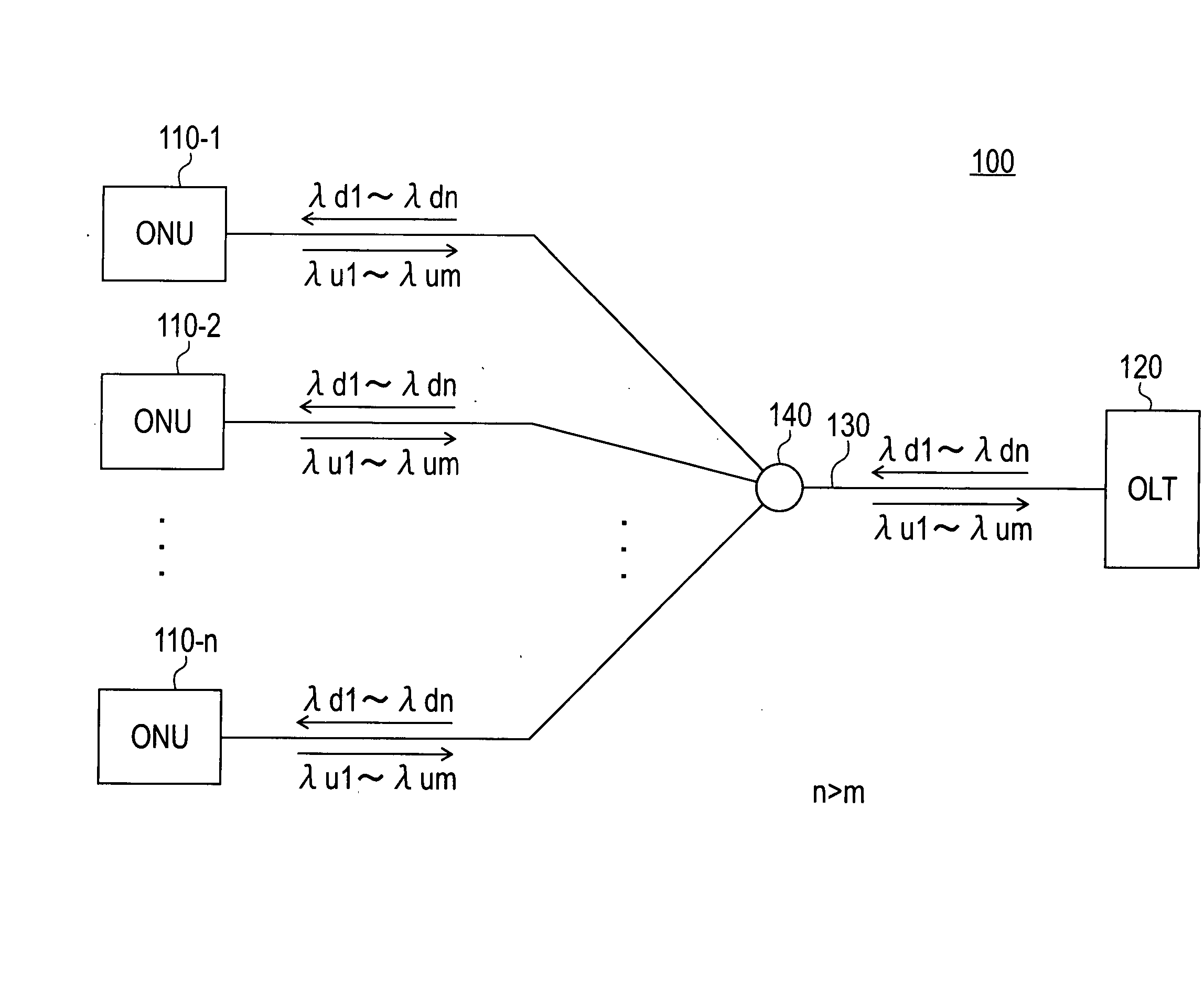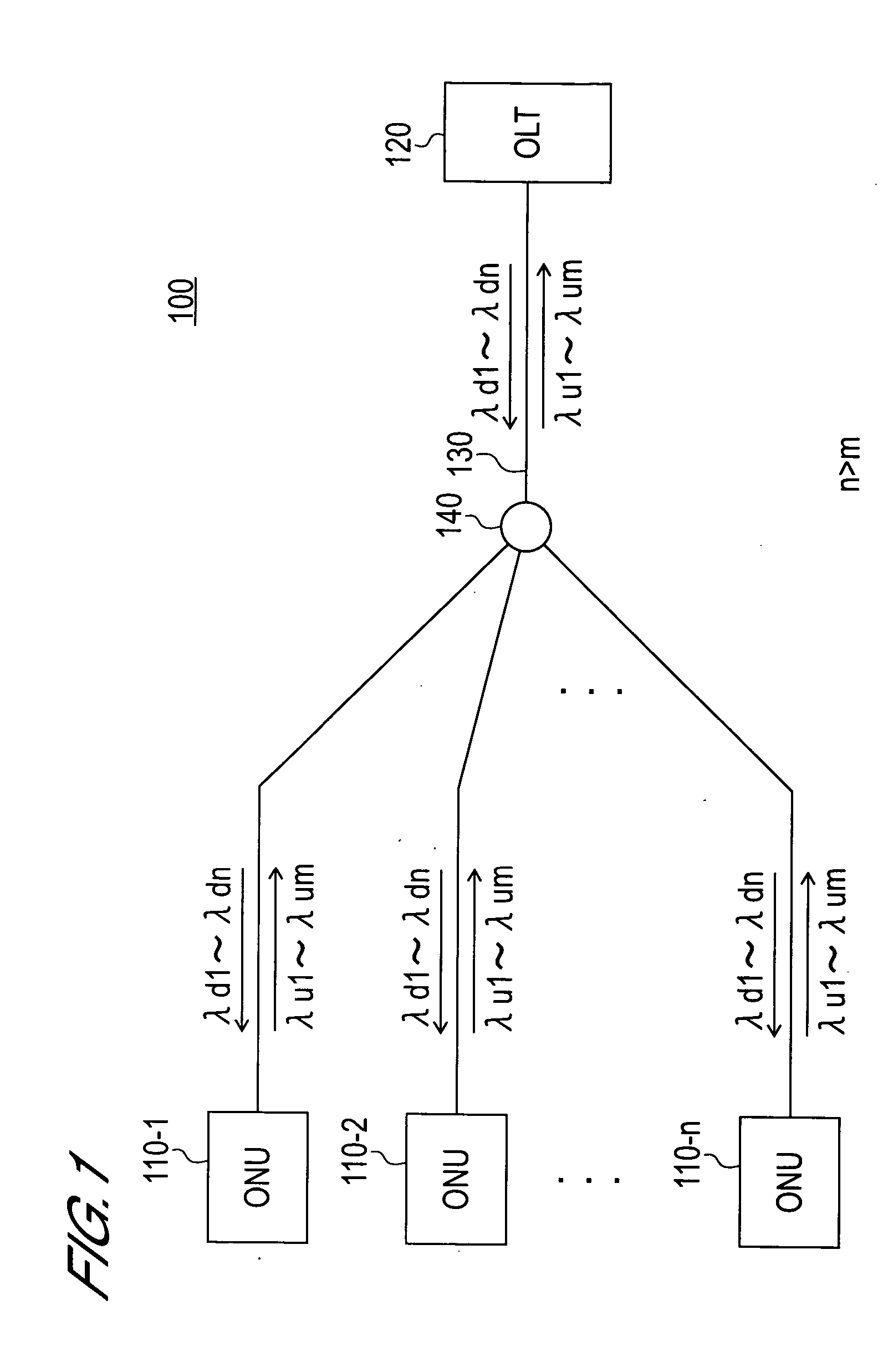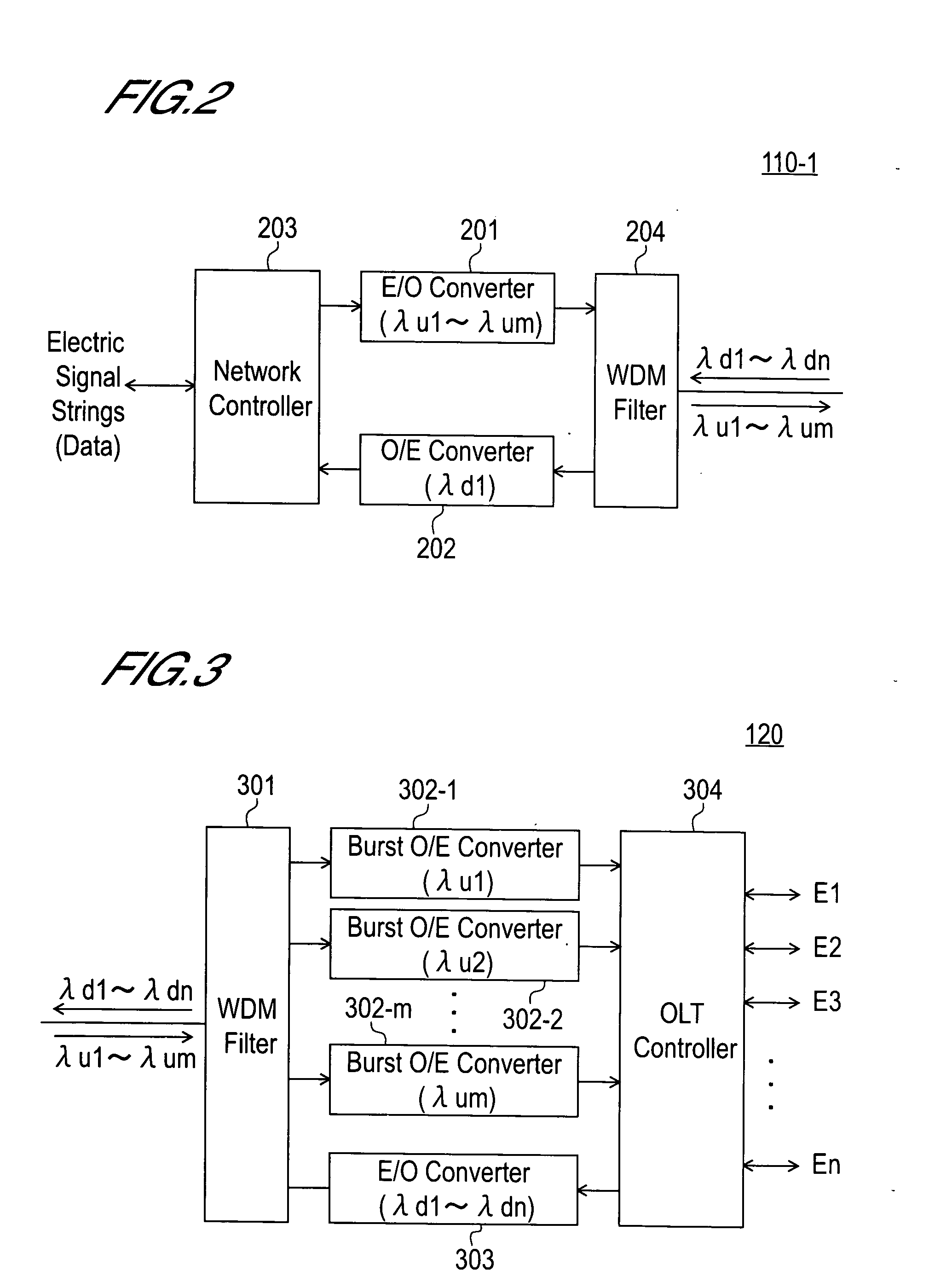Optical communication network
a communication network and optical communication technology, applied in the field of optical communication networks, can solve the problems of increasing the communication speed of one wavelength, narrow transmission assurance bands of ge-pon, and high equipment costs in telephone stations, so as to achieve the effect of improving flexibility and transmission efficiency when the transmission band is assigned
- Summary
- Abstract
- Description
- Claims
- Application Information
AI Technical Summary
Benefits of technology
Problems solved by technology
Method used
Image
Examples
first embodiment
[0044] The optical communication network according to the first embodiment will be described with reference to FIG. 1-FIG. 7.
[0045] The optical communication network according to the present embodiment uses the communication system according to the present invention, that is a multiplexing system combining a time division multiplexing and wavelength division multiplexing, as the access in the up direction. Hereafter the communication system according to the present invention is called the λ-TDMA system. A conventional WDM system is used for the communication in the down direction.
[0046]FIG. 1 is a diagram depicting a general configuration of the optical communication network according to the present embodiment. As FIG. 1 shows, the optical communication network 100 of the present embodiment has the PON structure, and comprises ONUs 110-1-110-n, OLT 120, optical fiber 130 and optical coupler 140.
[0047] The ONUs 110-1-110-n are subscriber side terminal devices of the optical commun...
second embodiment
[0080] The optical communication network according to the second embodiment of the present invention will now be described with reference to FIG. 8-FIG. 10.
[0081] In the present embodiment, the ONUs and the OLT are constructed such that each ONU can use a plurality of wavelengths simultaneously.
[0082] The general configuration of the optical communication network according to the present embodiment is the same as that of the first embodiment (see FIG. 1), so description thereof is omitted.
[0083]FIG. 8 is a block diagram depicting the internal configuration of the ONU according to the present embodiment. In FIG. 8, the composing elements denoted with the same reference symbols as FIG. 2 are the same as those in FIG. 2. As FIG. 8 shows, the ONU according to the present embodiment comprises the electric / optical converters 810-1-810-m and the switch 820.
[0084] The electric / optical converters 810-1-810-m have a fixed wavelength light source (not illustrated) which outputs light with ...
third embodiment
[0092] The optical communication network according to the third embodiment of the present invention will now be described with reference to FIG. 11 and FIG. 12.
[0093] In the present embodiment, a λ-TDMA system according to the present invention is applied to both the up and down directions.
[0094]FIG. 11 is a block diagram depicting the internal configuration of an ONU according to the present embodiment. As FIG. 11 shows, the ONU of the present embodiment comprises an electric / optical converter 1101, burst optical / electric converters 1102-1-1102-p, network controller 1103 and WDM filter 1104.
[0095] The electric / optical converter 1101 converts the electric signal strings into optical signal strings using the wavelength selective light source, which generates lights with m types of wavelengths λu1-λum, and outputs them to the WDM filter 1104. The optical wavelength and the output timing of the optical signal strings generated by the electric / optical converter 1101 are controlled by...
PUM
 Login to View More
Login to View More Abstract
Description
Claims
Application Information
 Login to View More
Login to View More - R&D
- Intellectual Property
- Life Sciences
- Materials
- Tech Scout
- Unparalleled Data Quality
- Higher Quality Content
- 60% Fewer Hallucinations
Browse by: Latest US Patents, China's latest patents, Technical Efficacy Thesaurus, Application Domain, Technology Topic, Popular Technical Reports.
© 2025 PatSnap. All rights reserved.Legal|Privacy policy|Modern Slavery Act Transparency Statement|Sitemap|About US| Contact US: help@patsnap.com



